The weeping milkcap (Lactifluus volemus) is a prized edible mushroom wherever it grows. It has a distinctively fishy smell when fresh, which, thankfully, disappears with cooking! This rather surprising smell and its propensity to “bleed” lots of milky latex make it one of the easier edible mushrooms to identify in eastern North America.
- Scientific Name: Lactifluus volemus
- Common Names: Weeping milkcap, voluminous latex milky, tawny milkcap, orange-brown milky, fishy milkcap, apricot milkcap. In the West Virginian mountains, the mushroom is called “leatherback” or “bradley,” possibly originating from its German name Brätling (Brätling translates to fried fritter or patty and usually refers to a veggie patty).
- Habitat: On the ground in oak and/or conifer forests
- Edibility: Good
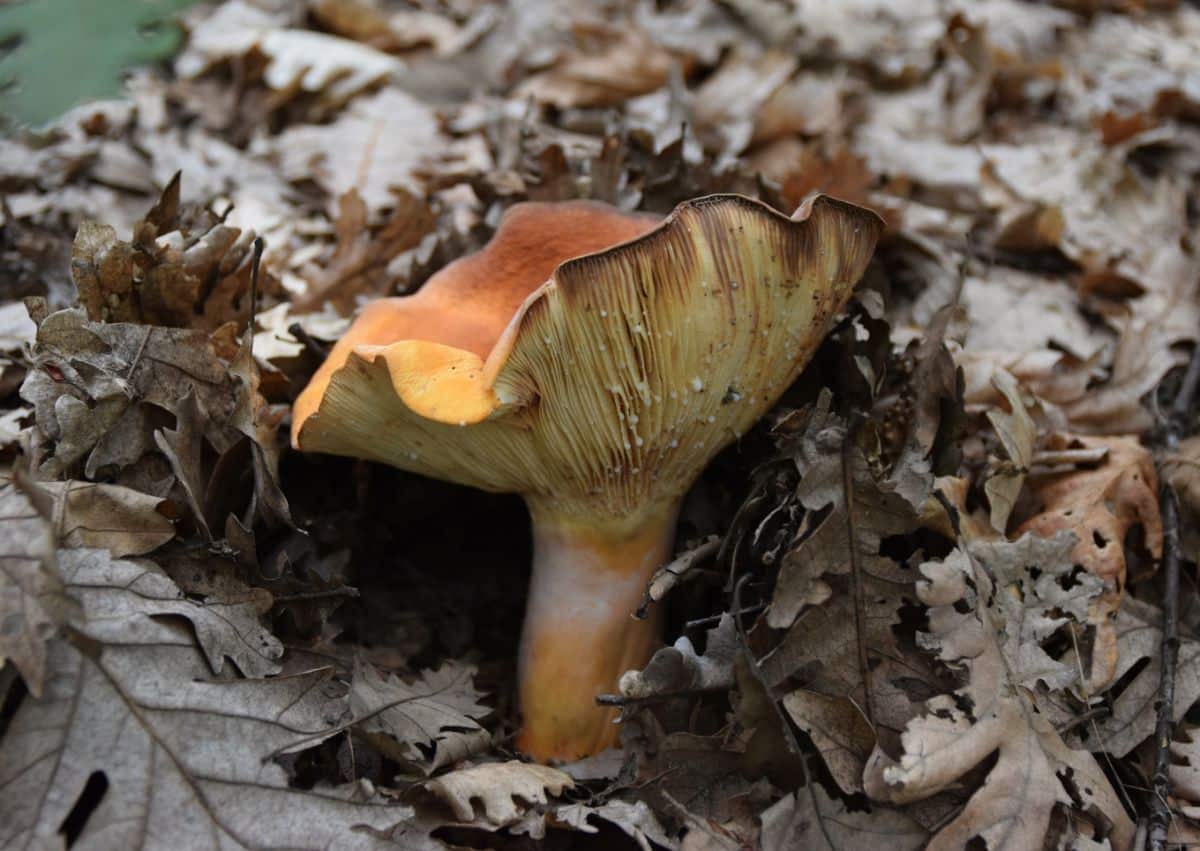

Jump to:
All About The Weeping Milkcap
Lactifluus volemus, the weeping milkcap, formerly known as Lactarius volemus, is a highly sought-after edible mushroom. Found in temperate, subtropical, and tropical regions of the Northern Hemisphere, this mycorrhizal fungus forms a mutually beneficial relationship with various tree species.
This mushroom has lots of lookalikes in the same family, but none are toxic, so there isn’t too much to worry about. The biggest issue is that other milkcap species may taste just awful.
Weeping milkcaps are a popular edible species around the world; in Asia, they are sold in markets along with several other milkcap mushrooms. In Nepal, it is among the most popular wild edible mushroom species.
While the weeping milkcap is widely distributed across the globe, it is in decline in some areas. Habitat destruction is the most common reason, but that, in combination with overharvesting, creates instability for the fungus in those regions. Primarily, the decline is happening in Europe, and in the Netherlands, it is deemed to be locally extinct.

Weeping Milkcap Identification Guide
Season
Summer through fall
Habitat
The weeping milkcap can be found growing in mixed deciduous hardwood forests and coniferous forests. The mushrooms typically grow alone, scattered, or in large groups. They are abundant in warm and humid weather conditions.
The species is widely distributed throughout Eastern North America, Europe, and Asia. It is most common in deciduous forests. In the United States, the weeping milkcap occurs from southern Canada east of the Great Plains, extending south to the East Coast.

Identification
Cap
The cap is 1- 5 inches in diameter, with a brownish-orange or orangish-brown color – apricot coloring to tawny coloring. Initially, the cap is convex with an inrolled (rolled under) edge, but it eventually becomes flat with a central depression or shallowly vase-shaped. The cap is smooth or slightly wrinkled but usually has a finely velvety texture, especially when young.
The orange-brown coloring varies a bit, sometimes more brown than orange and vice versa. It might even be a lighter tannish orange or a darker reddish brown. It does not have concentric color zones like many other milky cap species. The cap is more or less all the same color, with sometimes a darker spot in the center.
Gills
The gills are attached to the stem and might run slightly down it. They are closely spaced, creamy white to pale yellow in color, and discolor brown when injured. The gills often fork near the edge of the cap. There is a mix of short gills (ones that don’t extend all the way to the stem) and long gills (those that run into the stem).
When cut, the gills produce large amounts of milky latex, which is how it gets its common name.


Stem
The stem measures 2-4 inches long, and its color is similar to the cap but may be paler. The stem is smooth, sometimes with faint vertical lines, and is solid or may be starting to become hollow.
Flesh
The flesh is white and firm and stains slowly brown when sliced.
Milk
The milk is white, abundant and sometimes becomes brownish when exposed to air. The milk stains tissues and paper brown. And your hands. And everything you touch.
Odor and Taste
The weeping milkcap has a distinct fishy odor that disappears when cooked. Not only does it smell fishy, but its scent is that very strong reeking fish smell that is unmistakably dead-fish-like. Many say it smells like herring. The odor gets more potent after the mushroom has been picked and gets even more intense when being dried (whether drying naturally in your foraging bag or in the dehydrator, as the mushroom loses moisture, the smell concentrates).
The taste is mild.
Spore Print
The spore print is white.



Weeping Milkcap Lookalikes
Corrugated-Cap Milky (Lactifluus corrugis)
This species has a cap that looks like it is covered with thin, whitish-to-grayish felt when young. It commonly turns prominently corrugated at maturity – think lots of surface wrinkles. It has darker gills, too, and either a very faint fish scent or no odor at all. It gets confused with the weeping milky cap due to its orange coloring and because its milky latex also stains brown.
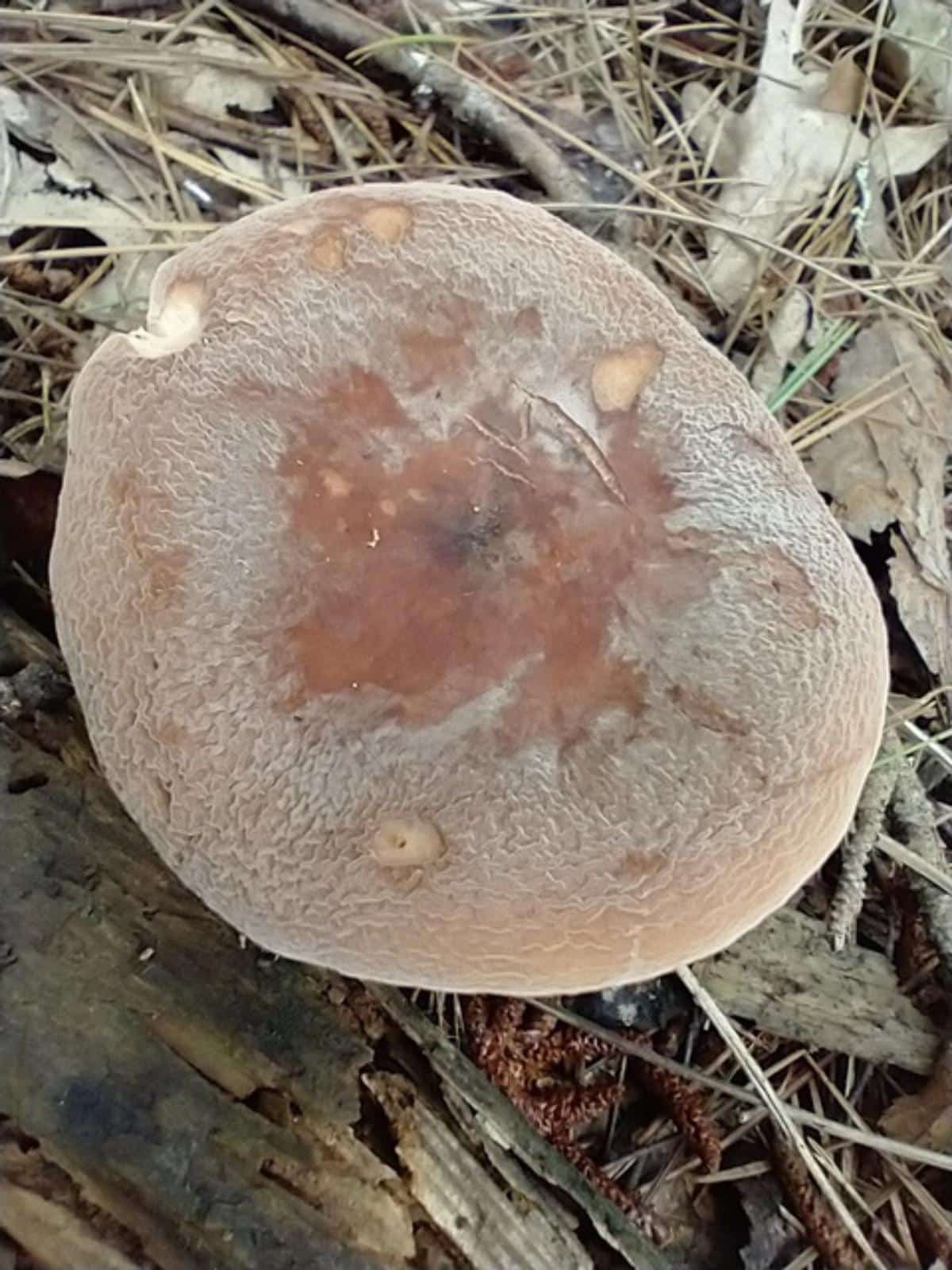
Lactifluus hygrophoroides
The hygrophorus milkcap species is extremely similar in appearance but has widely spaced gills and milk that does not change color. It also doesn’t smell like fish. This is also a great edible milky cap species.
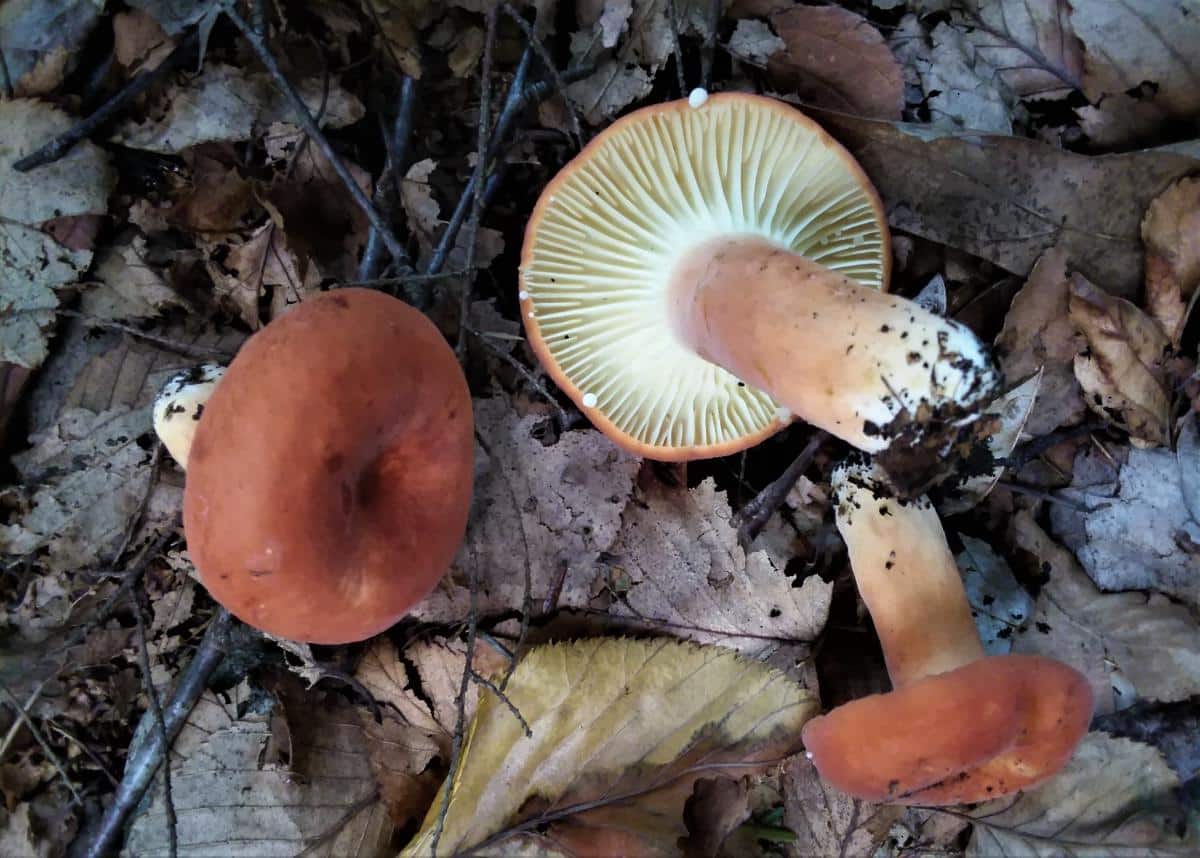
Edibility and Culinary Uses of Weeping Milkcaps
Despite its unappealing fishy scent when raw, the weeping milkcap is a highly prized edible mushroom with a fantastic meaty taste. The odor disappears during cooking, transforming into a rich, nutty flavor. The mushroom has a slightly granular texture, which some may find unpalatable.
The weeping milkcap is best prepared by slow cooking to prevent it from becoming too hard. It can be used in casseroles and thick sauces. Boiling or stewing these mushrooms makes them a bit slimy. It’s best to keep the mushroom intact (no cuts or slicing); this allows the juices to percolate and create juicy bite. However, the mushrooms are fine if sliced or diced and added to dishes as well.
Here are some suggested culinary uses for the weeping milkcap include:
- Sauté with garlic, onion, and herbs for a simple yet flavorful side dish.
- Add pre-cooked mushrooms to soups and stews for a rich, earthy flavor.
- Incorporate into pasta dishes, risotto, or stir-fries.
- Use as a topping for pizzas or flatbreads.
- Combine with other wild mushrooms for a delicious and diverse mushroom medley.
Weeping Milky Mushroom Recipes:
- How to cook mushroom? PANAI (Lactifluus Volemus mushroom) | LAMKA TRIBAL KITCHEN
- Milky Cap and Chanterelle Bisque
- Lactifluus Volemus with Shrimp, Garlic and Parsley
- Bratling Dumplings (in German)
- Pickled Bratlings (in German)
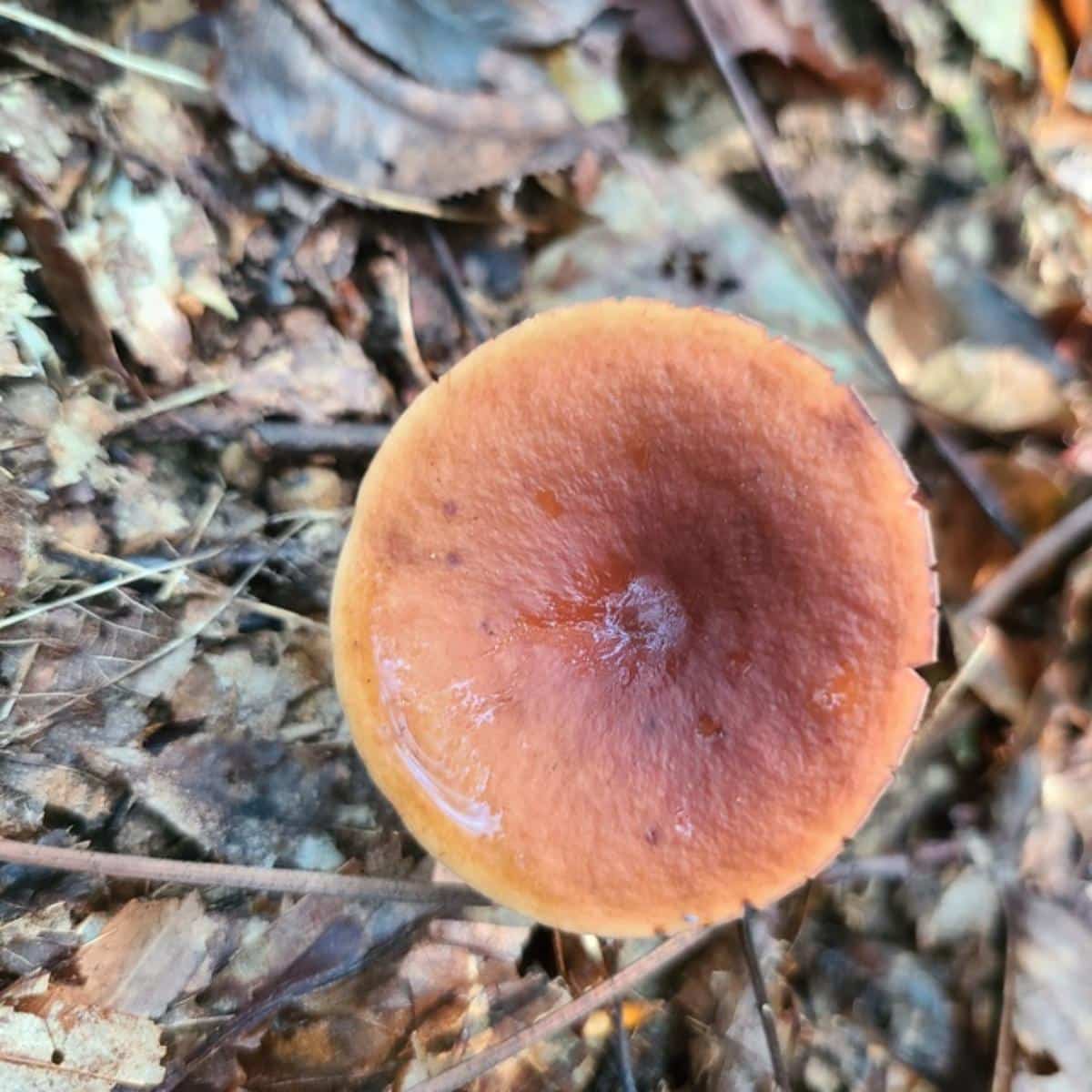
More Edible Milky Caps
Lactarius deliciosus: Also known as the saffron milkcap, this mushroom has a bright orange cap and a mild, nutty flavor.
Candy Caps: With an intoxicating maple syrup scent, this group of Lactarius mushrooms make a fantastic baking flavoring.
Peppery Milkcap: Not one you want to eat as is, though some people do. The spicy kick is no joke. Makes an excellent spice seasoning, though!
Lactarius indigo: This bright blue mushroom that also bleeds blue is an excellent edible, and a super fun mushroom to find.
Hygrophorus Milky Cap: This lookalike to the weeping milkcap is very common and also a good edible.
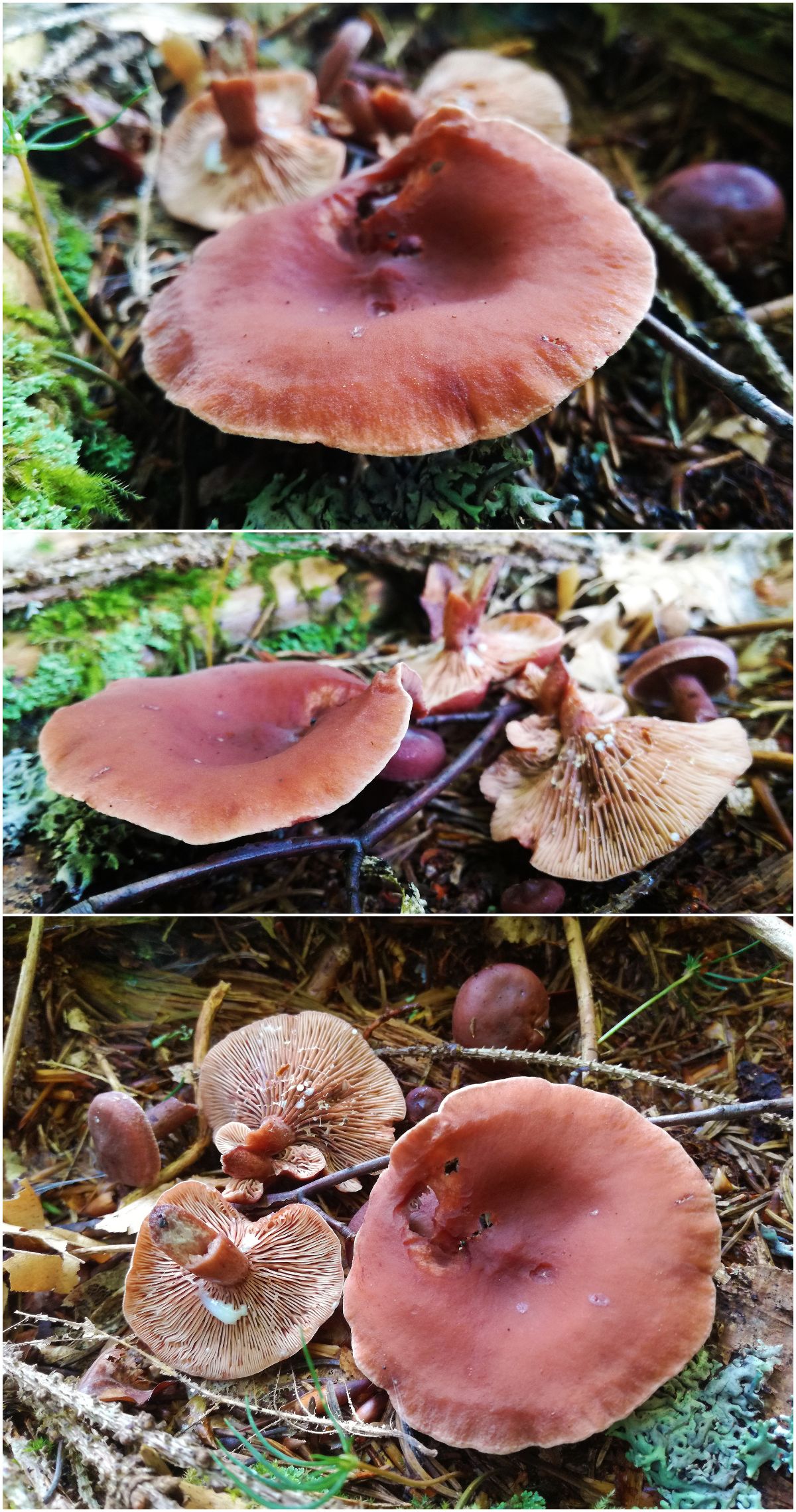
Common Questions About Weeping Milkcaps
Is the weeping milkcap edible?
Yes! See above for recipes and cooking ideas.
Are there any toxic milkcaps?
Some milkcap mushrooms are considered toxic and will make you sick, but there are no deadly poisonous mushrooms in the genus. As with all fungi, make sure you identify the mushroom with 110% accuracy before preparing it for the dinner table.





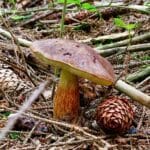
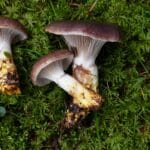


Leave a Reply